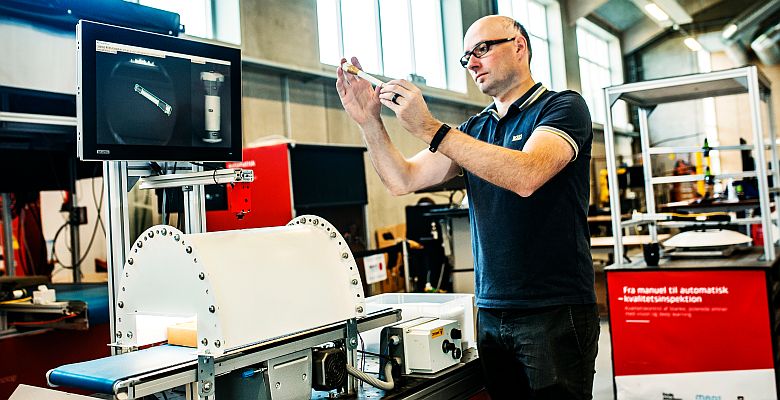NASA and ESA are embarking on a large-scale space mission seeking answers to whether there was ever life on the planet Mars. A Danish robotic arm is giving a hand.
The Teknologisk Institut in Odense (DK) is joining an international technology consortium that will develop robotic technology to collect soil and rock samples from Mars in order to search for evidence of life in space. A specially designed NASA vehicle - the Perseverance - is currently collecting soil and rock samples from the red planet, while planning for the major return mission that will carry them back 57 million kilometres for analysis on Earth is increasingly coming into focus.
Robotic arm
In this context, ESA has selected European organisations that will provide a crucial piece of robotic technology for the mission. On Mars, the Sample Transfer Arm will place the samples aboard the return rocket. Vision and robotics specialists from the Teknologisk Institut are part of the team and will help program the camera system for the robotic arm. This arm is one of ESA's biggest contributions to the NASA-led Mars Sample Return mission, and crucial to its success.
The Danish government gives high priority to technological development in robotics, including a nationwide robotics strategy. In that context, it is of great importance to get the seal of approval, which is when NASA and ESA choose Danish companies as technology suppliers. Moreover, the support helps bridge the gap between Danish robotics research and the world's elite in space. It should also help inspire students who choose to study robotics.
Previous space missions to Mars have had scientific instruments from Denmark on board for years. But this is the first time that specialists from the Danish robotics industry have been part of the space exploration. It is a testament to Denmark's competence in robotics to be selected as a partner.
Pick and place on Mars
As part of the overall mission - Mars Mars Sample Return - NASA and ESA are jointly launching the Sample Retriever Lander mission. It will bring the samples back to Earth in about a decade. Before that can happen, the robotic arm with the Danish contribution must continue what looks like an interplanetary treasure hunt, retrieving the samples collected by the Perseverance sent in 2020. On Mars, the robotic arm picks up the samples and loads them aboard a return vehicle. After this, the 57-million-kilometre journey back to Earth begins.
We normally call such a task by a robot a pick-and-place operation, and there are many of those in industry. But conditions on Mars are very different and more unfamiliar than in industry on Earth. It is crucial that the camera system provides accurate input to the robot so that it can take the samples as planned. Building a 200% robust system that can handle that task and at that distance is a big challenge. The Danes are keen to help solve that one.
Photo: Teknologisk Institut


